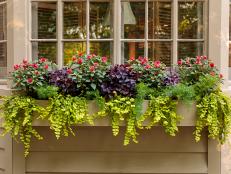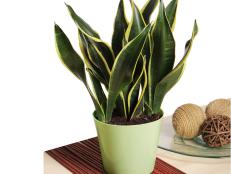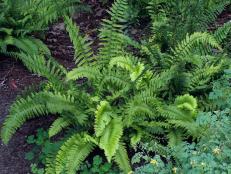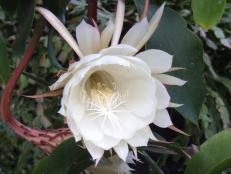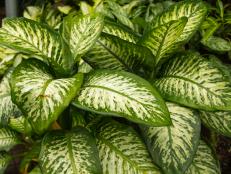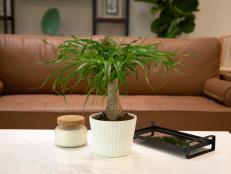Bird's Nest Fern
Not your typical fern, this tropical is a must-have among houseplants.

Blumen Gardens
A wide bowl terrarium includes Rex begonia, bird’s nest fern and Pilea nummulariifolia.

Sometimes plants provide a much-needed escape—not just by working with them, but also in their appearance in general. Take the bird’s nest fern: One look at this popular houseplant—with its long, waxy, apple-green fronds—sends us daydreaming to a tropical paradise.
In fact, this fern really doesn’t look much like a fern at all. Its solid, uncut, leaf-like fronds extend 18 inches or more from a fuzzy rosette, looking like tiny eggs as they begin to unfurl and stretch. In some countries, the fleshly leaves are cooked in stir fry and other dishes.
Native to southeast Asia, bird’s nest fern (Asplenium nidus), also known as spleenwort, is easy to grow if given the proper conditions—mainly warmth and humidity. An epiphyte (plants that can grow without soil and typically attach themselves to a host plant in nature), this fern grows naturally high in the trees of the rainforest, so it pairs nicely with bromeliads and orchids. Even grown alone, it makes quite the specimen plant.
Outdoors, bird’s nest fern is hardy only in zones 10 and 11—yet another reason it makes for such a popular houseplant. Indoors, give it bright but indirect light and temperatures between 70 and 80 degrees.
A fast grower, bird’s nest fern can be planted in all-purpose potting mixes, and because it’s a jungle plant, prefers soil that is well drained but remains evenly moist.
Caring for Bird's Nest Fern
- Avoid watering the center of the plant (the rosette) because it acts as a cradle and can cause the plant to rot. Instead, water the soil around the perimeter of the plant.
- Test the moisture level by sticking a finger an inch into the soil. It should be damp, but not soggy. If dry, add about an inch of water.
- Give the plant plenty of humidity by occasionally misting the fronds with a water bottle.
- Add a layer of mulch over the soil surface to help it retain moisture.
- During growing season, feed the fern every other week with a water-soluble fertilizer. Repot every couple of years in a larger pot with new soil.







